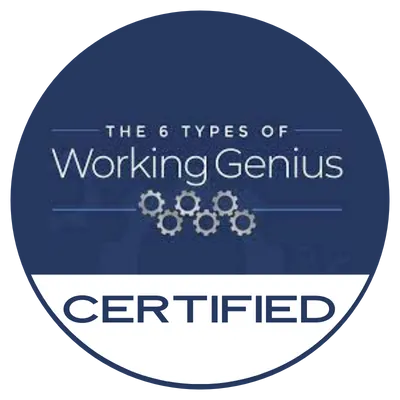
The Most Important Goal Every Business Owner Needs To Set
This is the time of year when we set goals for ourselves and our businesses. Business goals often include targets for revenue and profit growth. You may set goals around improving your culture or enhancing customer experience. However, the one goal that rules them all is a goal that many business owners fail to set with clarity and confidence: business valuation.
How much did you grow the value of your business in 2024? If you can answer this question with a specific number, congratulations! You don’t need to read this article. If you cannot answer this question with a specific number, this article may be the most important thing you read today.
Here’s the problem with not setting goals for the value of your business: You miss 100% of the goals you never set.
Without an understanding of the value of your company, you risk being very disappointed when the time comes to sell your business to a new owner or transfer it to the next generation. Since 80% of the wealth of most business owners is wrapped up in their business, this is something you don’t want to get wrong.
It all begins with setting goals for the valuation of your business.
Setting the Right Goals
Like most goals, you’ll want to set a minimum goal and a stretch goal. The minimum goal is what you need your business to be worth after taxes to secure your financial future. (For more on this, see the concept of the Wealth Gap in The 3 Gaps Every Business Owner Must Close to Secure Their Financial Future.) The stretch goal is what you would like your business to be worth. This is where you have the opportunity to create wealth that can impact your family and the world for generations.
Next, you need to understand what your business is worth right now and what it could be worth. When measuring the value of a business, not only do we calculate the current value of the business, we also determine the best-in-class value.This is done by looking at the top-performing businesses that have recently sold in your industry to get an idea of what your business might be capable of achieving.
Armed with this information, you can build a strategic plan to create value. For more ideas on this, grab a copy of A Business Owner’s Guide to Maximize Business Valuation.
SMART Goals: The Foundation of Effective Business Valuation
To ensure your business valuation goals are actionable and impactful, they must align with the SMART framework. This approach helps you define clear objectives and provides a roadmap for achieving them. Here's how to structure your valuation goals using SMART criteria:
Specific
Your valuation goals should answer the question: What exactly are you aiming to achieve? For instance, rather than saying, “I want to grow my business value,” set a specific goal like, “I want to increase my business valuation from $3 million to $4.5 million over the next three years.” This clarity provides focus and direction.
Measurable
A goal without a measurable outcome is like a race without a finish line. Valuation goals are inherently measurable, which makes them ideal for tracking progress. Use tangible metrics such as revenue multiples, EBITDA growth, or industry benchmarks to assess how close you are to achieving your target.
Achievable
While it's important to be ambitious, your goals should also be realistic. For instance, doubling your valuation in one year might be unrealistic for a mature business in a stable market, but a 25% increase over two years might be both challenging and attainable. Assess your resources, market conditions, and current performance to ensure your goals are within reach.
Relevant
Your valuation goals must align with your broader business objectives and personal aspirations. If your ultimate aim is to retire in ten years, the valuation goal should reflect the financial security you need for that transition. Ensure the goals you set resonate with your long-term vision for the business.
Time-Bound
A goal without a deadline is simply a wish. Assign a specific timeframe for achieving your valuation goals, such as one year, three years, or five years. Deadlines create urgency and allow you to plan milestones and check-ins to monitor your progress.
Conclusion: Unlock Your Business’s Full Potential
Setting a clear, SMART goal for your business valuation isn’t just a practical exercise—it’s a transformational one. It forces you to confront the reality of your business's current value, articulate a vision for its future, and commit to a strategic plan to bridge the gap. By focusing on valuation, you not only build wealth for yourself but also create a legacy that can benefit your family and community for generations to come.
The journey to maximizing business valuation begins with a single step: setting a goal. Take that step today and position your business for a brighter, more secure future.
Call-to-Action
Ready to take the next step? Schedule your 30-Minute Value Creation Briefing and get a copy of my book, A Business Owner’s Guide to Maximize Business Valuation. Together, we’ll create a roadmap to achieve your goals and unlock your business’s true potential. Don’t wait—your future starts now.
Originally published on Darrell Amy's LinkedIn.
FREE BUSINESS VALUATION
Large Call to Action What is Your Business Worth?
You can Discover the Value of Your Business in Less than 20 Minutes!
Join 70,000 business owners and get your score on the 8 Factors That Drive Your Company’s Value, a comprehensive analysis of your score and a detailed action plan for how to improve your score on each.

DISCOVER HOW YOUR COMPANY CAN UNLEASH STRATEGIC INNOVATION
Attract, engage, and retain top talent
Integrate new technologies like AI
Build competitive advantage
Create profitable growth
"Wow! This is incredibly powerful! My integrator needs to see this right away.
Chris C.
Visionary and CEO


We run our business on EOS
We run our business on EOS



